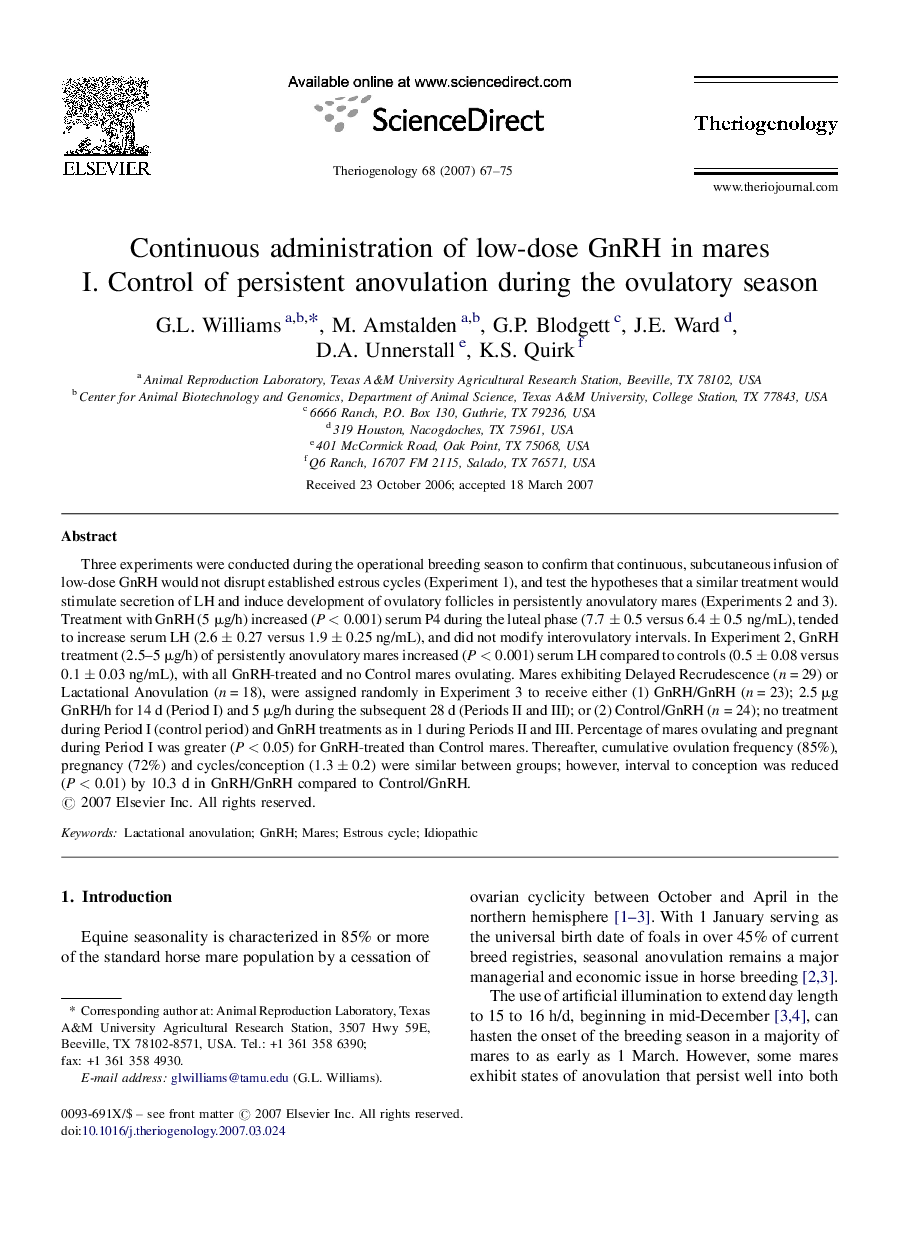| Article ID | Journal | Published Year | Pages | File Type |
|---|---|---|---|---|
| 2096399 | Theriogenology | 2007 | 9 Pages |
Three experiments were conducted during the operational breeding season to confirm that continuous, subcutaneous infusion of low-dose GnRH would not disrupt established estrous cycles (Experiment 1), and test the hypotheses that a similar treatment would stimulate secretion of LH and induce development of ovulatory follicles in persistently anovulatory mares (Experiments 2 and 3). Treatment with GnRH (5 μg/h) increased (P < 0.001) serum P4 during the luteal phase (7.7 ± 0.5 versus 6.4 ± 0.5 ng/mL), tended to increase serum LH (2.6 ± 0.27 versus 1.9 ± 0.25 ng/mL), and did not modify interovulatory intervals. In Experiment 2, GnRH treatment (2.5–5 μg/h) of persistently anovulatory mares increased (P < 0.001) serum LH compared to controls (0.5 ± 0.08 versus 0.1 ± 0.03 ng/mL), with all GnRH-treated and no Control mares ovulating. Mares exhibiting Delayed Recrudescence (n = 29) or Lactational Anovulation (n = 18), were assigned randomly in Experiment 3 to receive either (1) GnRH/GnRH (n = 23); 2.5 μg GnRH/h for 14 d (Period I) and 5 μg/h during the subsequent 28 d (Periods II and III); or (2) Control/GnRH (n = 24); no treatment during Period I (control period) and GnRH treatments as in 1 during Periods II and III. Percentage of mares ovulating and pregnant during Period I was greater (P < 0.05) for GnRH-treated than Control mares. Thereafter, cumulative ovulation frequency (85%), pregnancy (72%) and cycles/conception (1.3 ± 0.2) were similar between groups; however, interval to conception was reduced (P < 0.01) by 10.3 d in GnRH/GnRH compared to Control/GnRH.
